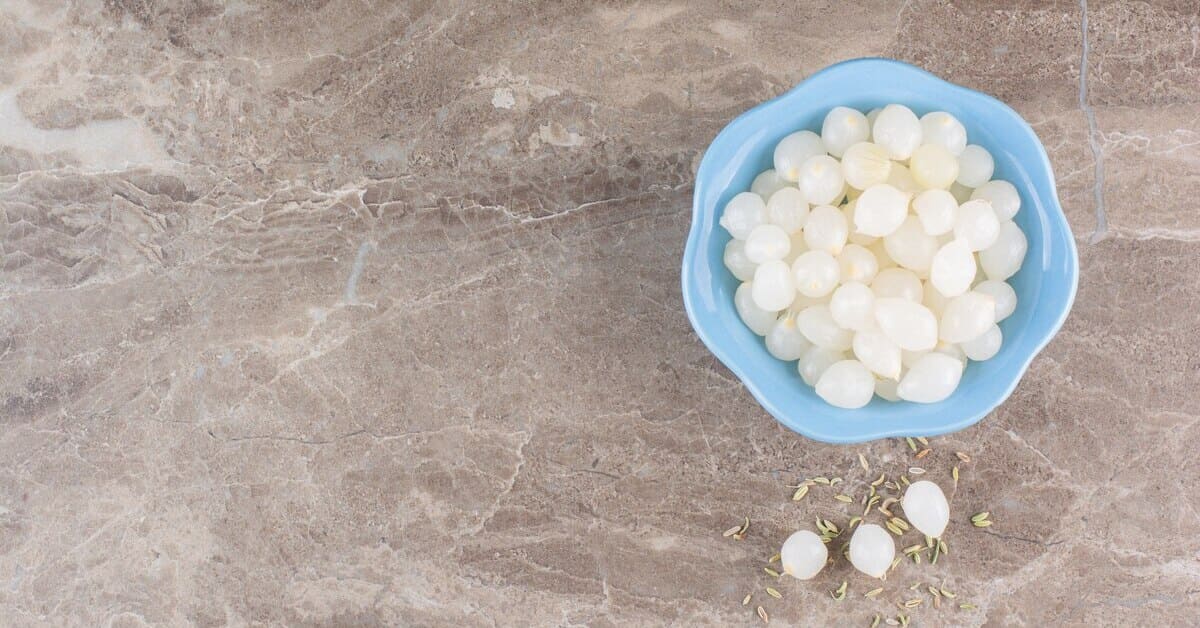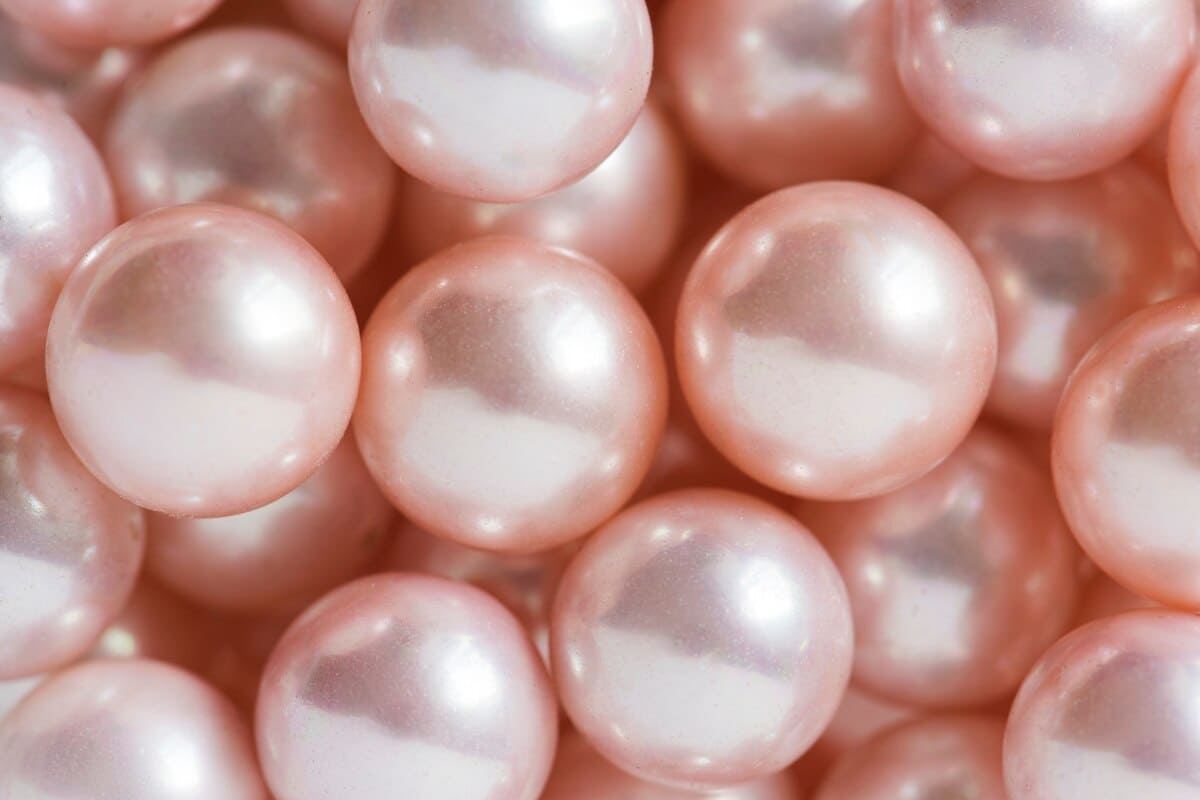South Sea Pearls: A Guide to Elegance and Luxury
Welcome to our guide on South Sea pearls, the epitome of elegance and luxury in the world of pearls. In this article, we will delve into the captivating allure and exquisite craftsmanship behind these prestigious gems. Join us as we explore the origin, beauty, value, care, and versatility of South Sea pearls.

The Origin of South Sea Pearls
South Sea pearls, often referred to as the “queen of pearls,” are produced by the Pinctada maxima oyster, native to the warm waters of the South Pacific. This region, renowned for its pristine beaches and abundant marine life, provides the perfect environment for these remarkable pearls to develop.
The History of South Sea Pearls
South Sea pearls are considered the most valuable and coveted of all pearls and have been cherished for centuries. Here is a brief history of these magnificent gems:
- The first recorded discovery of South Sea pearls was in the 16th century in the waters surrounding the Philippines and Indonesia.
- In the early 1900s, Kokichi Mikimoto, known as the father of the modern pearl industry, successfully cultivated pearls in the Akoya oyster, but he was not able to produce South Sea pearls.
- It wasn’t until the 1950s that South Sea pearl farming began to flourish in Australia with the pioneering efforts of individuals like Mr. Bill Ramsay.
- Today, Australia remains the largest producer of South Sea pearls, followed by Indonesia and the Philippines.
South Sea pearls owe their rarity and luxuriousness to the long and difficult process of cultivating them. Each pearl takes several years to form, as an irritant, such as a bead, is inserted into the oyster’s gonad, and then the oyster gradually coats the irritant in layers of nacre, forming a pearl.
Characteristics of South Sea Pearls
South Sea pearls come in a range of colors, from white to silver, gold, and champagne, and can be found in sizes up to 20 millimeters in diameter – much larger than other pearl types. Due to their rarity, size, and luster, South Sea pearls are some of the most expensive pearls sold on the global market.
South Sea pearls are one of the most sought-after types of pearls in the world. These pearls are produced by the large oyster species, Pinctada maxima, that are native to the warm waters of the South Seas. Here are the main characteristics of South Sea pearls:
- Size: South Sea pearls are the largest pearls available, ranging from 9mm to 20mm in diameter. The size of the pearl often depends on the size of the oyster that produced it.
- Color: These pearls generally have a soft, subtle color palette, ranging from white to gold. The color of the pearl is determined by the oyster’s lip color, which is the organ that produces the nacre.
- Luster: The luster of a South Sea pearl is one of its most distinguishing features. It has a soft, luxurious sheen that has been described as a satin-like glow. This is due to the thick layers of nacre that build up over time.
- Shape: While most pearls are roughly spherical, South Sea pearls can come in a variety of shapes, including round, button, drop, oval, and baroque. Baroque pearls are the most irregularly shaped and are highly prized by collectors.
- Value: South Sea pearls are some of the most valuable pearls in the world, often selling for thousands of dollars per strand. The value of a South Sea pearl depends on its size, shape, color, and luster.
- Sustainability: South Sea pearls are sustainably farmed, with many farms operating in Australia, Indonesia, and the Philippines. The farming of South Sea pearls provides jobs for many people in coastal communities and supports the local economy.
The Distinctive Beauty of South Sea Pearls
What sets South Sea pearls apart is their remarkable size and mesmerizing luster. Ranging from 9 to 20 millimeters, these pearls are the largest among all cultured pearls. Their size alone creates a sense of opulence and grandeur that is hard to rival.
The luster of South Sea pearls is truly exceptional, reflecting light in a way that gives them an irresistible glow. This natural radiance adds depth and dimension to any piece of jewelry adorned with these pearls, making them a favorite choice for connoisseurs and fashion enthusiasts alike.
How to Choose High-Quality South Sea Pearls
When it comes to investing in South Sea pearls, it’s important to know what to look for to ensure you are getting a high-quality product. Here are some factors to consider when selecting South Sea pearls:
Luster
Luster is the most critical factor to consider when choosing South Sea pearls. The luster refers to the pearl’s glow or shine, caused by the reflection of light on the layers of the nacre. High-quality South Sea pearls have a mirror-like surface that reflects light exceptionally well.
Size
South Sea pearls are the largest pearls in the world, and a larger size typically means a higher price. However, size doesn’t always indicate quality. It’s important to consider the other factors on this list along with size when selecting pearls.
Shape
South Sea pearls come in a variety of shapes, including round, oval, and baroque (irregular or non-symmetrical). While round pearls are more expensive due to their rarity, other shapes can also be high-quality and equally stunning.
Color
South Sea pearls come in a range of colors, from white and gold to silver and black. However, not all colors are natural, as some pearls are dyed or bleached to achieve a certain hue. Natural colors that are deep and even throughout the pearl are generally considered high-quality.
Surface
The surface of a pearl refers to its blemishes and imperfections. While all-natural pearls have some surface imperfections, high-quality South Sea pearls have minimal flaws and a smooth surface.
It’s important to purchase South Sea pearls from a reputable dealer and ask for a certificate of authenticity. With these factors in mind, you can make an informed decision when choosing high-quality South Sea pearls.
The Best Places to Buy South Sea Pearls
If you’re in the market to buy South Sea pearls, you’ll want to make sure you’re purchasing high-quality, authentic pearls from a reputable seller. After researching and consulting with industry experts, here are some of the best places to buy South Sea pearls:
- Tahiti Pearl Market: This company offers a wide variety of South Sea pearls, including black, white, and golden pearls. They’re headquartered in Tahiti and also have locations in Bora Bora and Moorea. They specialize in loose pearls, jewelry, and custom designs.
- Pacific Pearls International: This Australian company boasts a 99% customer satisfaction rate and offers a wide range of South Sea pearls at competitive prices. They have a diverse selection of loose pearls, jewelry pieces, and sets.
- Pearls of Joy: This family-owned and operated company is based in the United States and specializes in freshwater, Akoya, and South Sea pearls. They have a large collection of jewelry pieces, as well as loose pearls and custom designs.
- Winterson: Based in the UK, this company offers a unique range of high-quality South Sea pearl jewelry pieces. They also have a selection of loose pearls available for purchase. They pride themselves on ethical sourcing and sustainable practices.
- Atlas Pearls and Perfumes: With pearl farms located in Indonesia’s remote islands, Atlas Pearls produces beautiful South Sea pearls that are known for their quality and luster. They offer a range of jewelry pieces, as well as un-mounted pearls and custom designs.

The Value of South Sea Pearls
South Sea pearls hold a special place in the world of luxury gemstones, captivating collectors and enthusiasts with their unmatched beauty. Several factors influence their value, including market demand and inherent rarity.
Market Demand and Rarity
The allure of South Sea pearls has grown exponentially over the years, making them highly sought after by jewelry aficionados and investors alike. As a result, their market value has steadily increased, reflecting their exclusivity and desirability.
South Sea pearls are considered rare due to the challenging and time-consuming process involved in their cultivation. The delicate nature of the Pinctada maxima oyster, combined with the limited number of oysters capable of producing high-quality pearls, contributes to their scarcity in the market. This rarity adds to their allure and enhances their value.
Pricing Factors
When determining the price of South Sea pearls, several factors come into play. These include the pearl’s size, shape, color, luster, and surface quality. Larger pearls with a perfectly round shape, vibrant color, high luster, and flawless surfaces command higher prices due to their rarity and aesthetic appeal.
Other factors influencing pricing include the reputation of the pearl producer, brand recognition, and market demand. Fine jewelry designers and renowned pearl dealers often collaborate to create exclusive collections featuring South Sea pearls, further adding to their value.
Caring for South Sea Pearls
To ensure the longevity and continued beauty of your South Sea pearls, proper care, and maintenance are essential.
Cleaning and Storage
To clean your pearls, gently wipe them with a soft, lint-free cloth after each wearing to remove any accumulated dirt or oils. Avoid exposing your pearls to harsh chemicals, including perfume, hairspray, or cosmetics, as these can dull their luster.
When storing your South Sea pearls, keep them separate from other jewelry to prevent scratching. Place them in a soft pouch or lined jewelry box, away from direct sunlight and excessive heat or humidity. This will help preserve their natural beauty and protect them from damage.
Wearing and Maintenance
When wearing South Sea pearls, it’s important to consider their delicate nature. Avoid exposing them to excessive force or impact, as this can cause damage to the pearls or their setting. It’s advisable to remove your pearls before engaging in physical activities or when using household cleaners or chemicals.
Periodically, have your South Sea pearls examined by a professional jeweler. They can assess the pearls’ condition, restring them if necessary, and ensure that the settings and clasps are secure. This regular maintenance will help preserve their beauty and integrity for generations to come.
South Sea Pearl Harvesting Process
As a pearl lover and researcher, I feel that understanding the process of pearl harvesting is essential in appreciating the beauty and value of South Sea pearls. In this section, I will take you through the process of harvesting South Sea pearls from the Pinctada maxima oyster, which is the largest pearl-producing oyster in the world.
- Seeding: The first step in the pearl harvest process involves the seeding of the Pinctada maxima oyster. A technician inserts a small bead nucleus, which acts as an irritant around which the oyster secretes layers of nacre to form a pearl sac.
- Controlled Environment: After seeding, the oysters are placed in farms in shallow waters, where environmental factors such as water temperature, salinity, and nutrition are closely monitored to ensure optimal growing conditions.
- Cleaning and Inspection: The oysters are regularly cleaned to prevent parasites, barnacles, and algae growth, which may damage the developing pearls. Additionally, pearl farmers inspect the oysters regularly to monitor the growth and health of the pearls.
- Harvesting: South Sea pearls are typically harvested after two to three years when the pearl sacs have grown to an adequate size. The harvest involves opening the oysters, removing the pearls, and replacing the bead nucleus with a new one for subsequent harvests.
- Sorting and Grading: After harvesting, the pearls are sorted into categories based on size, shape, color, luster, and surface quality. The highest quality pearls are typically round or near-round with a smooth, glowing surface and minimal blemishes.
The harvesting process of South Sea pearls is a delicate and meticulous procedure that requires skill and expertise. The natural beauty of South Sea pearls is a testament to the dedication and passion of pearl farmers, who safeguard the unique manufacturing process to produce these magnificent gems.
The Versatility of South Sea Pearls
South Sea pearls are not only prized for their elegance and luxury but also for their versatility in jewelry and fashion.
Jewelry and Fashion
Whether showcased in necklaces, earrings, bracelets, or rings, South Sea pearls add a touch of sophistication to any jewelry design. Their size and luster make them particularly well-suited for statement pieces that exude opulence and glamour.
South Sea pearls are often paired with diamonds or other gemstones to create breathtaking combinations that enhance their beauty. From classic strands to innovative modern designs, these pearls elevate any jewelry collection and become heirloom pieces cherished for generations.
South Sea Pearls in Haute Couture
Beyond traditional jewelry, South Sea pearls have also made their mark in the world of haute couture. Esteemed fashion designers have incorporated these pearls into their runway creations, adorning garments, handbags, and even footwear with their luminescent charm.
South Sea pearls add a touch of luxury and refinement to couture ensembles, creating captivating and unforgettable looks. Their versatility allows them to seamlessly transition from classic elegance to avant-garde fashion, making them a favorite choice among designers seeking to push boundaries and redefine beauty.
Famous South Sea Pearl Jewelry Pieces
South Sea pearls are some of the most valuable and sought-after pearls in the world, prized for their luster, size, and rarity. Given their unique qualities, it’s no surprise that they have been used in many famous jewelry pieces over the years. Here are just a few notable examples:
- The Pearl of Lao Tzu: Also known as the Pearl of Allah, this is one of the largest pearls in the world, measuring about 9 inches in diameter and weighing around 14 pounds. It was discovered in the Philippines in the 1930s and is said to have once belonged to a Chinese official named Lao Tzu. Today, the pearl is owned by a private collector and has an estimated value of $40 million.
- The Imperial Hong Kong Pearl: This stunning pearl necklace is made up of 21 perfectly matched South Sea pearls, each of which measures between 11 and 16 millimeters in diameter. The necklace was commissioned by Wong Yue Chuen, a prominent Hong Kong businessman, in the 1970s. Today, it is considered one of the most valuable pearl necklaces in the world, with a price tag in the millions.
- The South Sea Pearl and Diamond Tiara: Worn by Princess Diana to a state banquet at Buckingham Palace in 1995, this tiara features round and pear-shaped South Sea pearls set among diamonds and platinum. The piece was originally created for Queen Elizabeth II in 1963 by Garrard & Co. and has also been worn by Princess Margaret and Princess Anne.
- The Baroda Pearl Necklace: This historic necklace was created by the Maharaja of Baroda in the late 19th century and features nearly 7 rows of South Sea pearls. Among the pearls are a number of rare, natural pearls that are irregularly shaped and create a unique, asymmetrical effect. The necklace was sold at auction in 2007 for a record-breaking $7.1 million.
These are just a few examples of stunning jewelry pieces that have been made with South Sea pearls over the years. Each piece showcases the beauty and rarity of these exquisite gems and serves as a testament to the skill and artistry of the jewelers who create them.
Conclusion
In conclusion, South Sea pearls represent the pinnacle of elegance and luxury. Their distinctive beauty, rarity, and versatility have captivated jewelry enthusiasts and connoisseurs worldwide. From their origin in the pristine waters of the South Pacific to their exquisite craftsmanship, South Sea pearls continue to inspire awe and admiration.
By understanding the factors that influence South Sea pearl quality, appreciating their market value, and practicing proper care and maintenance, you can ensure that your South Sea pearls retain their timeless allure for years to come.
These exceptional pearls, with their remarkable size, captivating luster, and an array of colors, are the epitome of sophistication and grace. Whether adorning a piece of exquisite jewelry or making a bold statement in haute couture, South Sea pearls exude elegance and luxury like no other.
As you embark on your journey into the world of South Sea pearls, let their enchanting beauty inspire you. Explore the endless possibilities of incorporating these magnificent gems into your personal style and witness the transformation they bring to any ensemble.
With their enduring charm and timeless appeal, South Sea pearls truly embody the essence of elegance and luxury. Indulge in their exquisite beauty and embark on a lifelong admiration of these treasured gems. Discover the allure of South Sea pearls and allow their luminous radiance to become a part of your own story of elegance and refinement.




Leave a Comment